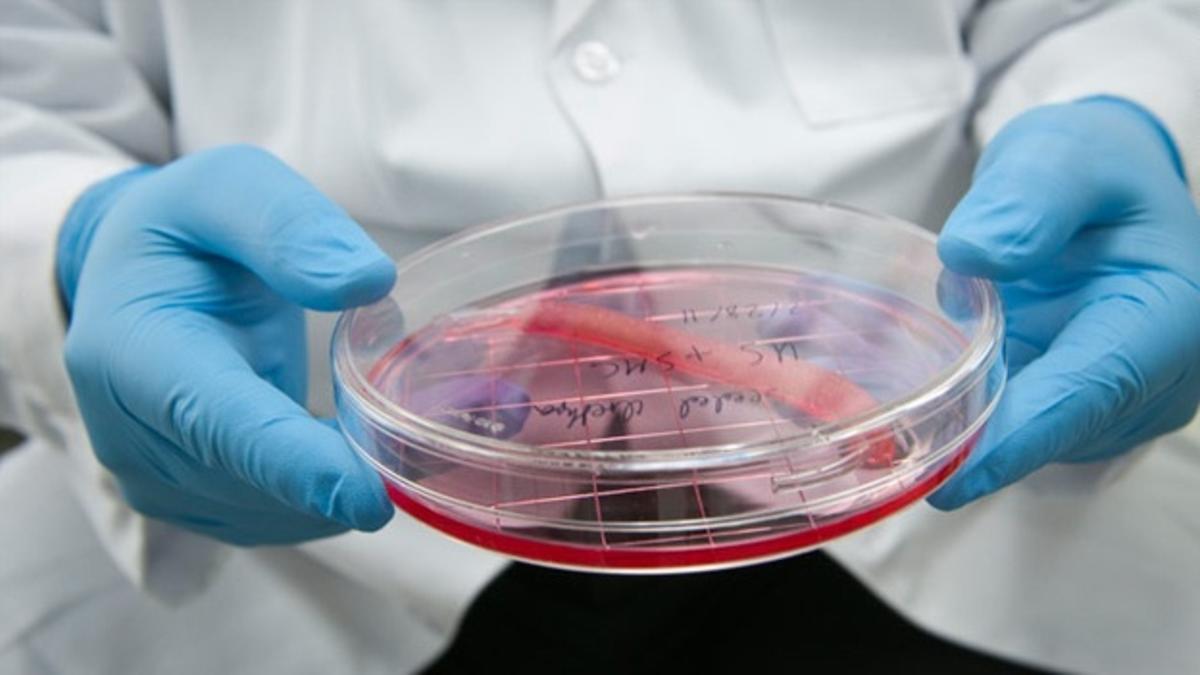As non-invasive cosmetic techniques continue to replace traditional surgical solutions, an increasing number of plastic surgeons and aestheticians are bringing their strengths together to offer patients a wider range of services.
Statistics compiled by the American Society of Plastic Surgeons (ASPS) show a steady growth in the number of cosmetic procedures performed over the past year, accompanied by a shift in the types of procedures patients have been choosing since the start of the new millennium. According to the ASPS most recent data and surveys, the overall number of procedures performed every year has risen by 115 percent. This can be attributed in part to the increasing demand for laser, IPL, BBL, filler, microneedling, dermabrasion, peels and other non-invasive treatments.
Shifts in consumer trends and new technologies have also created a greater need for plastic surgeons to work with the best medical aestheticians and skin care specialists in the business. Though these skilled professionals may have different training and skills depending on the environment in which they work, they all have the same goal: to help their patients achieve their aesthetic goals.
Zwivel spoke with four practices in the Chicago area to learn more about this trend.
Dr. Steven Hayan and Terri Wojak
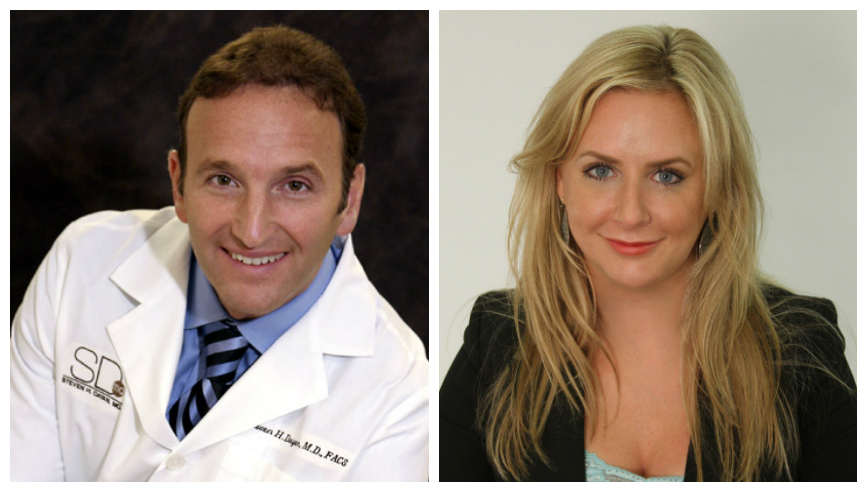
Dr. Steven H. Dayan, MD and licensed esthetician Terri Wojak have been teamed up for over 10 years. Dr. Dayan is a facial reconstruction specialist and graduate of the University of Illinois as well as a best selling author as listed in the New York Times. In addition to his busy practice Dr. Dayan teaches burgeoning estheticians alongside Wojak.
Why are aestheticians working alongside plastic surgeons?
TW: Working alongside a physician allows the estheticians to be more knowledgeable, to help educate clients and recommend medical services – not to mention that it just makes sense. Plastic surgeons are performing cosmetic medical procedures that enhance the appearance of a patient, whereas the esthetician prepares, maintains and enhances what the physician can do.
The esthetician supports the surgeon by making sure patients are caring for their skin pre- and post-clinical treatments, in conjunction with giving the client a sense of ease and reassurance about maintaining healthy skin. Just like Batman and Robin, individually they can get the job done, but together they’re the dynamic duo!
What value does the relationship hold?
SD: Incorporating Terri into my practice is one of the smartest decisions I ever made. I’ve advocated for estheticians for over 15 years. I think that with the proper training and professionalism they offer a significant and meaningful contribution to any aesthetic practice. There are numerous reasons for us to work together. For example, Terri will prep patients, apply their make-up after treatments, help with post-surgical patients using manual lymphatic drainage, and operate certain mechanical devices that reduce swelling.
Additionally, a well-trained esthetician may recognize when something needs to be seen by a doctor. Working here creates the opportunity to be continually educated on the science of medicine and effective skin care. Mostly, Terri provides our patients with the important additional time and care they need, making them happier.
Have there been any shared exciting and/or innovative work experiences you could tell us about?
TW: Dr. Dayan had a long-time patient come in a week after her facelift to get her bandages removed. Once they were removed, she was immediately distraught, saying she did not get the results she’d anticipated. He tried calming her down and explained that the skin needs time to heal itself, as was discussed prior to performing the procedure, but she was still unhappy. So he asked me to give her an ultrasound treatment to help reduce the swelling.
As she laid down for her treatment she asked me “if this was normal”, and I answered her by saying “this is a question I get asked often, and it’s all part of the healing process.” I gave her a 15-minute treatment and once she saw the immediate reduction in her swelling, she left the office happy and confident her results were going to be amazing. She even mailed Dr. Dayan a thank you card the following week. The combination of the treatment and putting her at ease brought back the trust she had in Dr. Dayan to begin with.
SD: Throughout the years I’ve always recognized the importance of the advanced training estheticians require to work in a medical setting. It’s important that those working in a clinical setting have an understanding of the cosmetic medical procedures being done so they can treat a patient’s skin safely and effectively. This is what led to the development of the True U Education center that Terri and I started 10 years ago. It’s a training center for post-graduate estheticians who work in, or are looking to work in, the medical field. We train students on everything from OSHA and HIPAA regulations to professionalism to advanced skin care treatments and pre/post-surgical skin care.
Dr. John Kim and Juana Shin
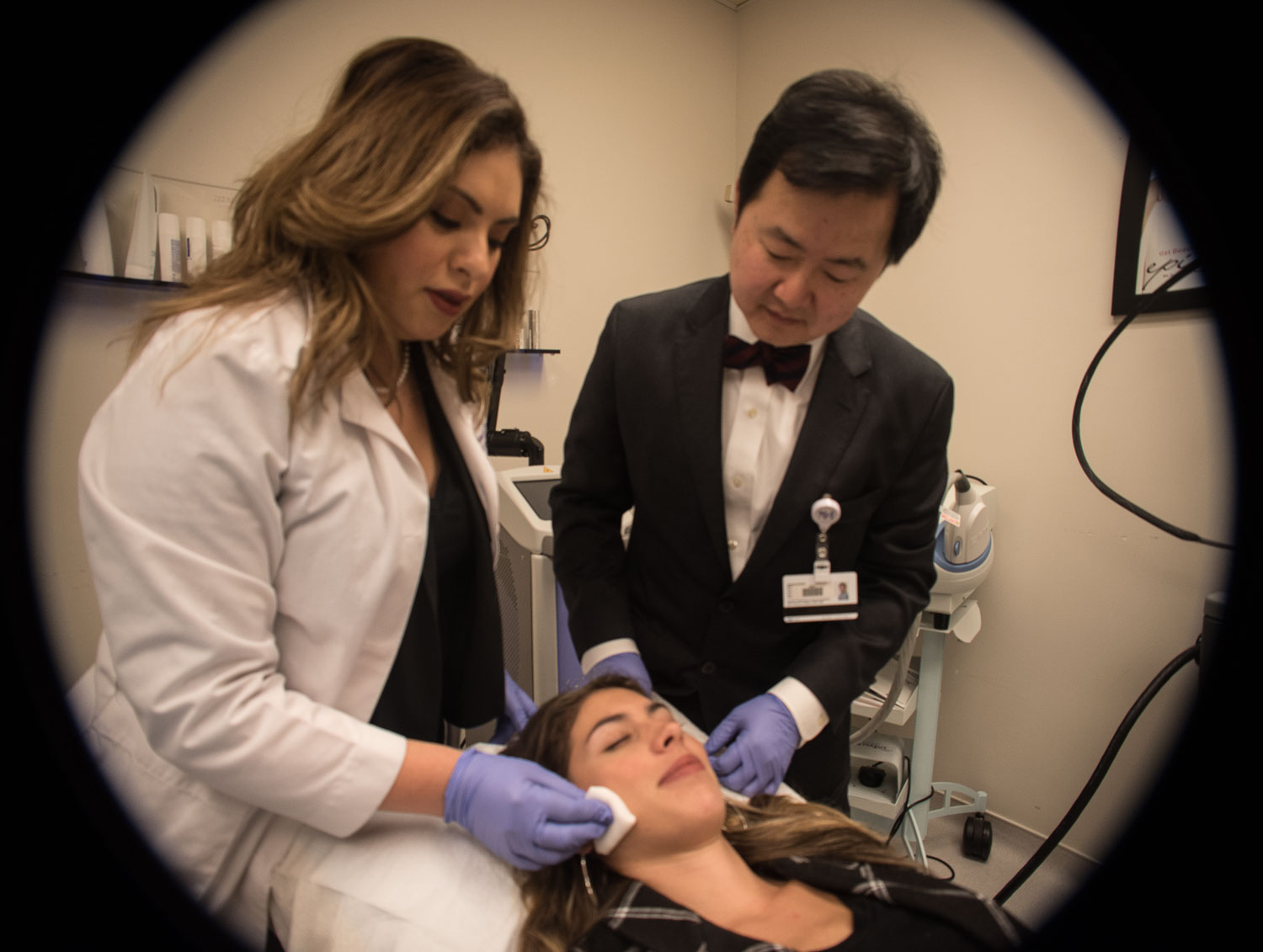
Dr. John Kim, MD and medical aesthetician Juana Shin have been working together for almost three years at Chicago’s Northwestern Memorial Hospital. Dr. Kim has completed over 5000 surgical procedures in the last decade alone. With a strong focus on breast reconstruction for cancer patients, this Harvard and Stanford University-educated physician works with the best in his field to give his patients optimal care after they’ve undergone life-altering health experiences.
Why are aestheticians working alongside plastic surgeons?
JK: To cultivate and build relationships, increase the chance of retaining a clients loyalty, and to keep them coming back to us.
What value does the relationship hold?
JS: Both Dr. Kim and I help treat patients with conditions that critically impact their self-esteem and require a higher level of sensitivity.
Have there been any shared exciting and/or innovative work experiences you could tell us about?
JS: Oh yes, with breast reconstructive patients. The diagnosis of cancer and the thought of losing a breast are extremely traumatic to the patient. Dr. Kim reconstructs the breast and nipple, then I complete the look by adding color and creating a 3D Areola Tattoo. It’s a very satisfying feeling for both the patient and medical team.
What new technologies increase your need to work together the most?
JS: With constant changes in the medical field I am often required to complete continuing education courses to learn the most up-to-date techniques and advanced training. This allows me to remain competitive, knowledgeable and the very best I can be for our patients.
Dr. Anil Shah, Ranen Atieh, and Joanna Leon
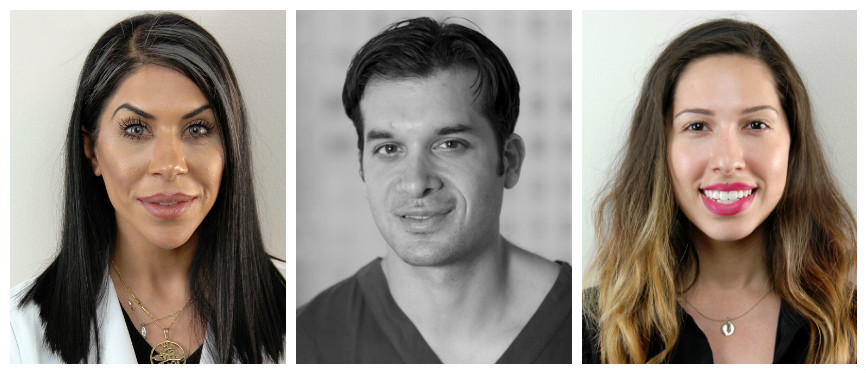
Dr. Anil Shah, MD has worked with aestheticians Joanna Leon and Ranen Atieh for approximately 5 years. As one of Chicago’s top facial plastic surgeons, he performs minimally invasive state-of-the-art procedures that maximize results while minimizing recovery time. Working with Chicago’s social elites, models and actresses, Dr. Shah and his aestheticians strive to bring out their clients inner and outer beauty.
Why are aestheticians working alongside plastic surgeons?
AS: Aestheticians are skin specialists whose areas of expertise compliment plastic surgeons. When aestheticians like Joanna and Ranen work alongside me, the scope of services, such as the depth of chemical peels and their ability to use lasers, is increased – especially when compared to aestheticians who work independently or in non-medical spas. By improving the quality of their skin, patients are able to reap the benefits and look and feel their very best.
Have there been any shared exciting and/or innovative work experiences you could tell us about?
AS: There have been many experiences that have brought joy to my office and patients. One patient had visited over five different medical offices trying to treat hyperpigmentation all over her face. When she finally came to us we devised a plan for her that began with a Melanage Peel. Although the browns on her face were improved, later the aestheticians discussed the challenges she faced a little further with me and we decided to switch to lasers to help areas that seemed resistant to a pigment. After three treatments, our patient was beyond thrilled with her results. By working together with our aestheticians, we were able to rise to the challenge.
What new technologies increase your need to work together the most?
AS: Some of the newer radio-frequency technologies such as Forma and Fractora can enhance patients results. Many of my facelift patients ultimately decide to see one of our aestheticians and have either Forma or Fractora treatments afterwards to build up collagen. Even though a facelift improves the redundant skin and contours of the neck, these other procedures help by continually adding collagen to help patients fight the ravages of aging.
Dr. Peter Geldner and Michelle Phelps
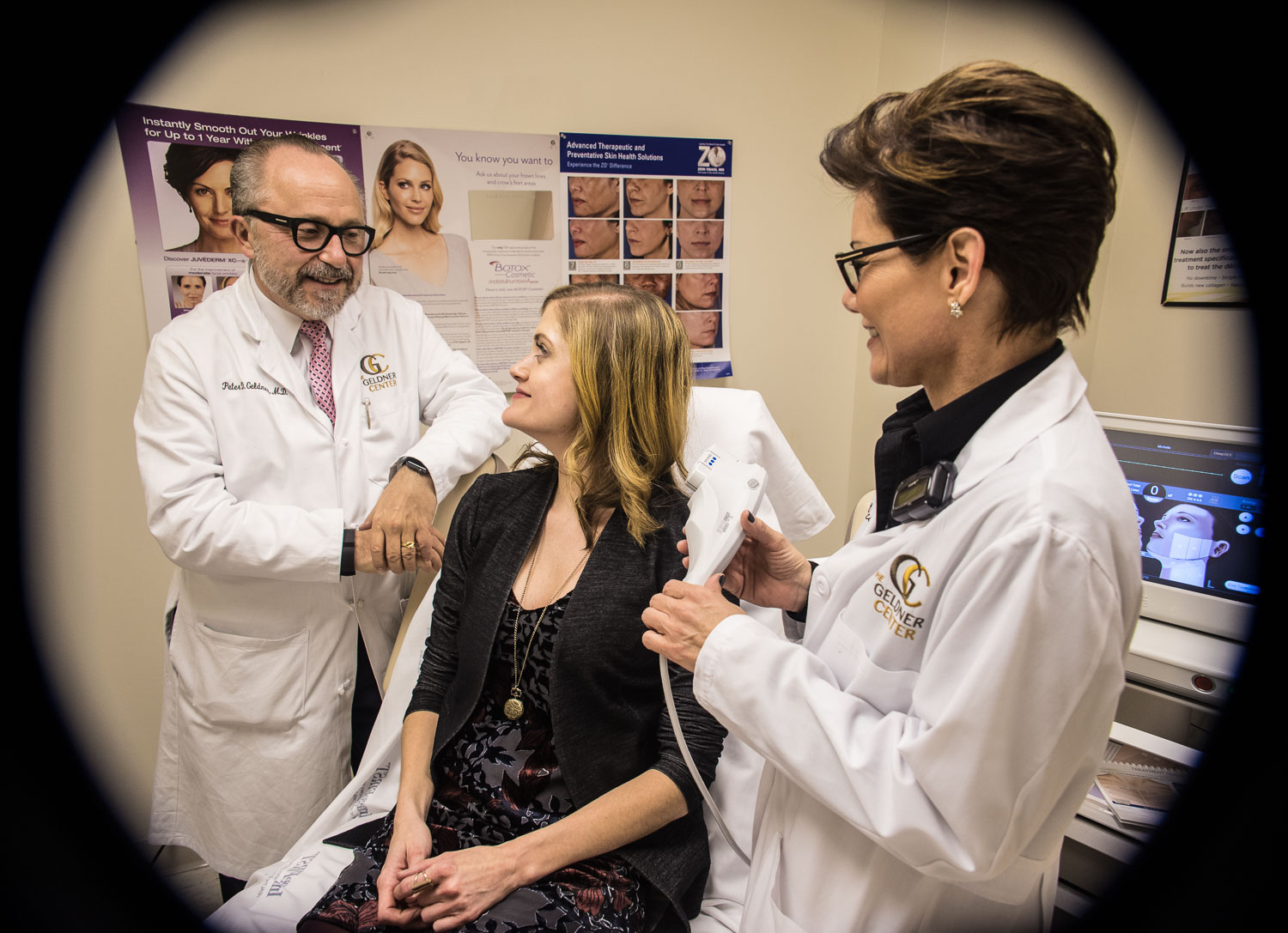
Dr. Peter Geldner, MD and Michelle Phelps have been working together for two years. As a graduate of both the University of Wisconsin and Johns Hopkins, Dr. Geldner is an innovator, having worked with aestheticians since the opening of his practice many years ago. Aided by a large team of talented aesthetic professionals, Phelps and Geldner have an excellent working relationship, together helping their clients.
Why are aestheticians working alongside plastic surgeons?
PG: Surgical intervention takes you only so far. Surgery makes for profound changes. The aestheticians role is to smooth out the overall results and finesse the management of daily skin care to retain the changes. Some patients prefer non-invasive, safe improvements until they are ready for a more comprehensive treatment. The aesthetician keeps the results fresh. Aestheticians, like Michelle, perform non-invasive treatments that are independent and complimentary to the surgical results. These treatments round out the experience to what the surgeon does.
What value does the relationship hold?
MP: As an aesthetician, I am always looking and talking with my patients about their needs and wants so far as anti-aging and how to improve their overall appearance is concerned. Sometimes my abilities and treatments only go so far. At that point, I need the aesthetic eye of Dr. Geldner, maybe to make a decision about using injectable fillers or neurotoxins, or abdominoplasty versus Coolsculpting, or a facelift versus Ultherapy. Together, we round out the experience for our patients by combining what we each do particularly well.
What new technologies increase your need to work together the most?
MP: Ultherapy and Coolsculpting. These treatments are complimentary to surgery, together working towards overall general improvement.









